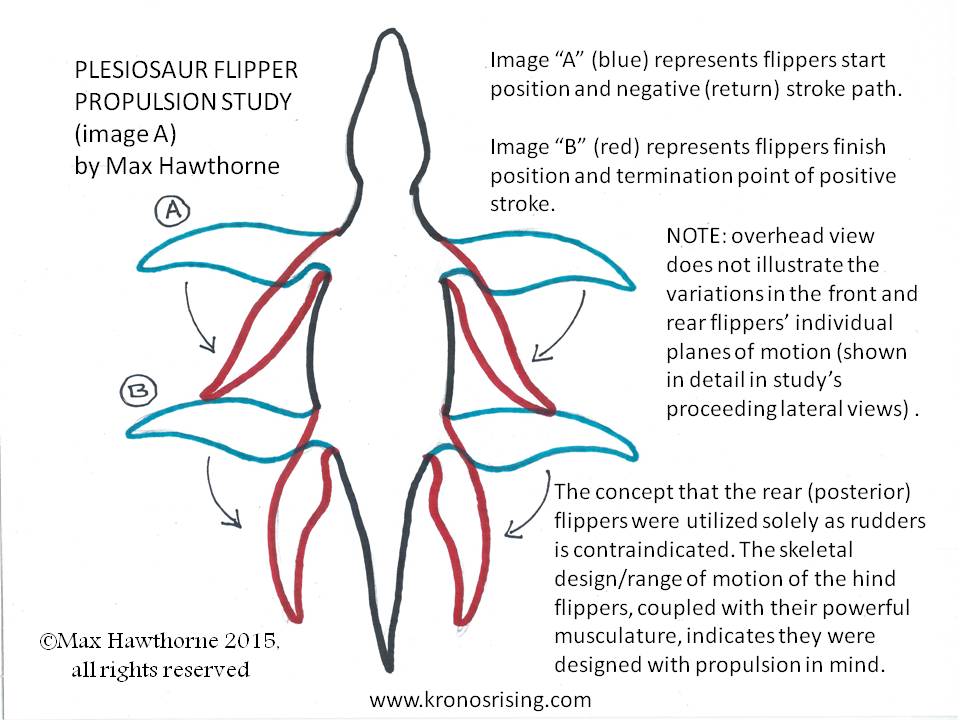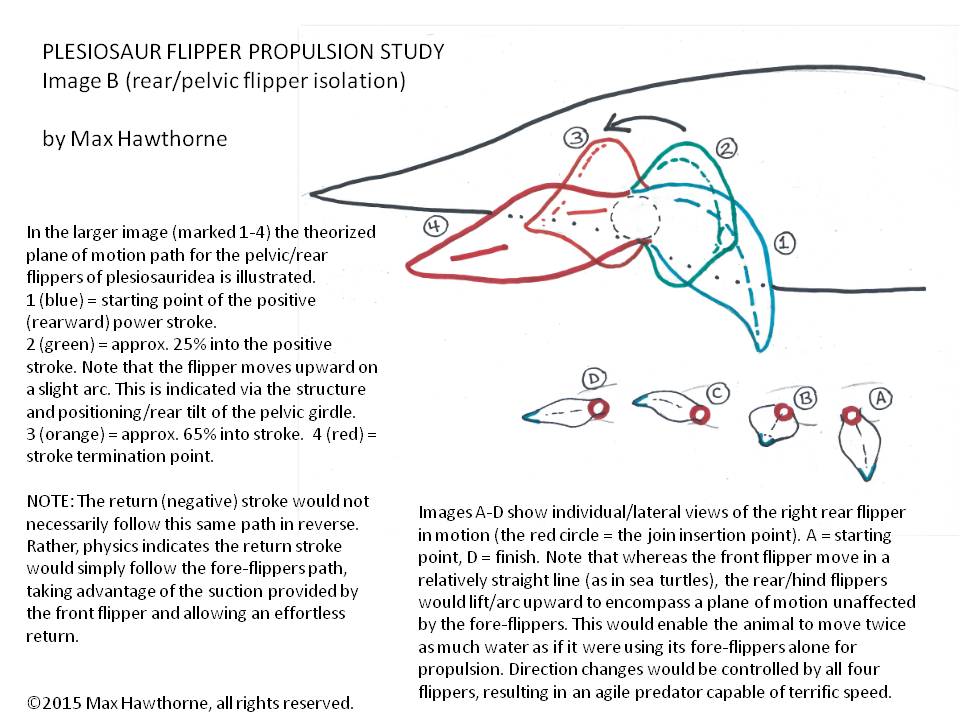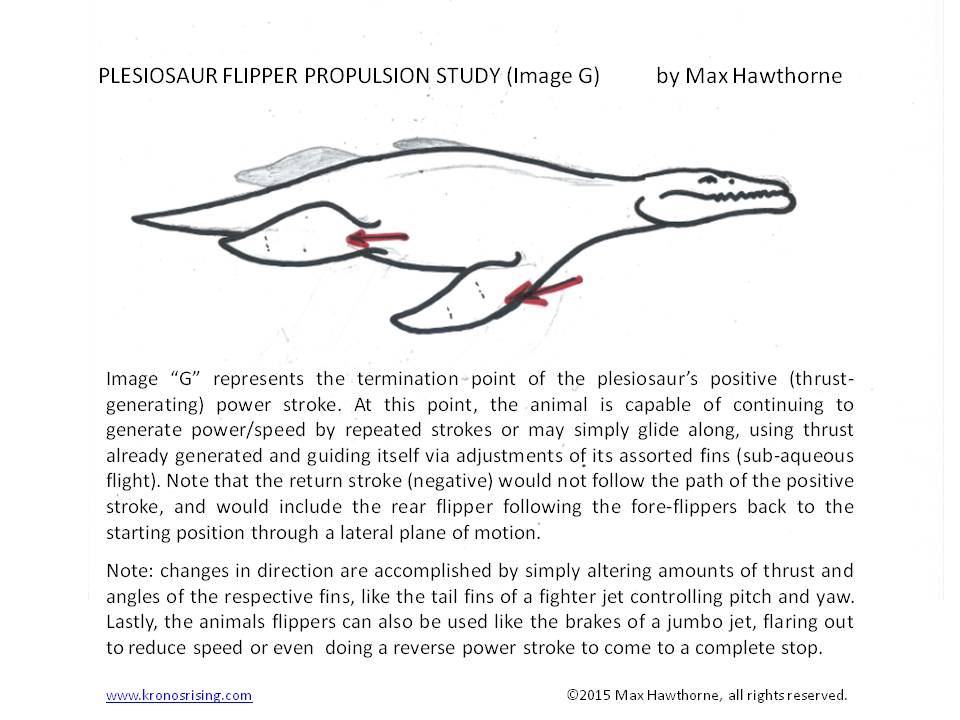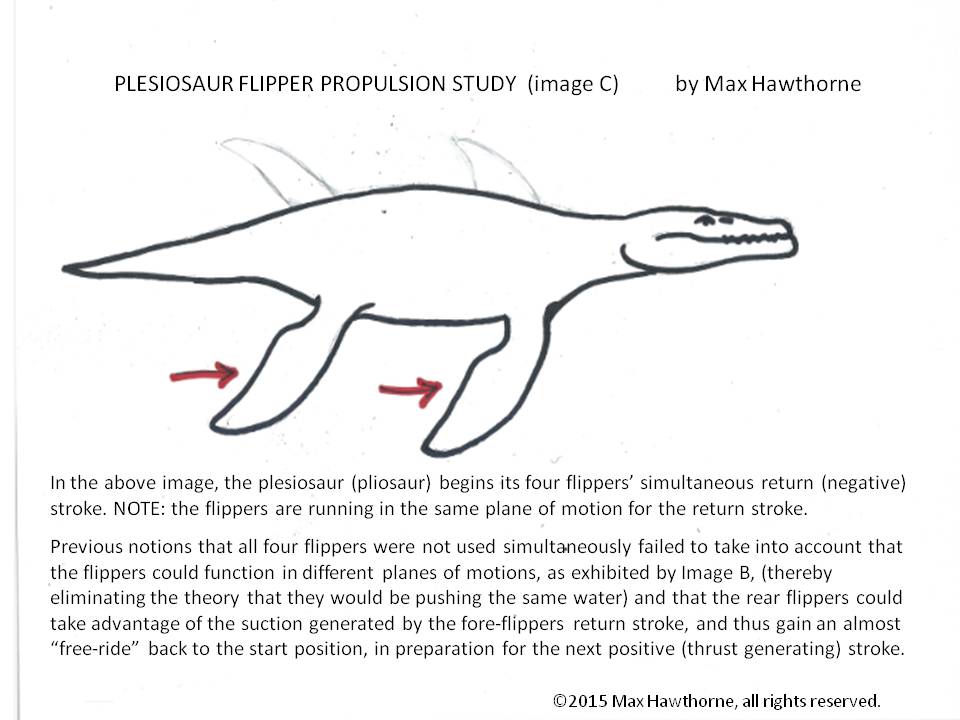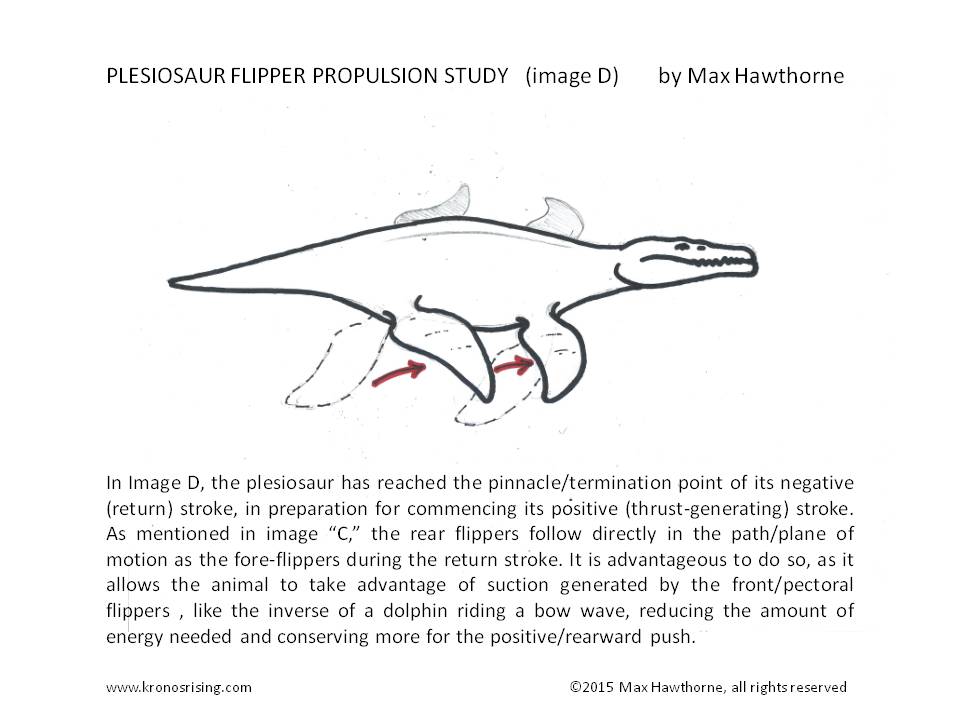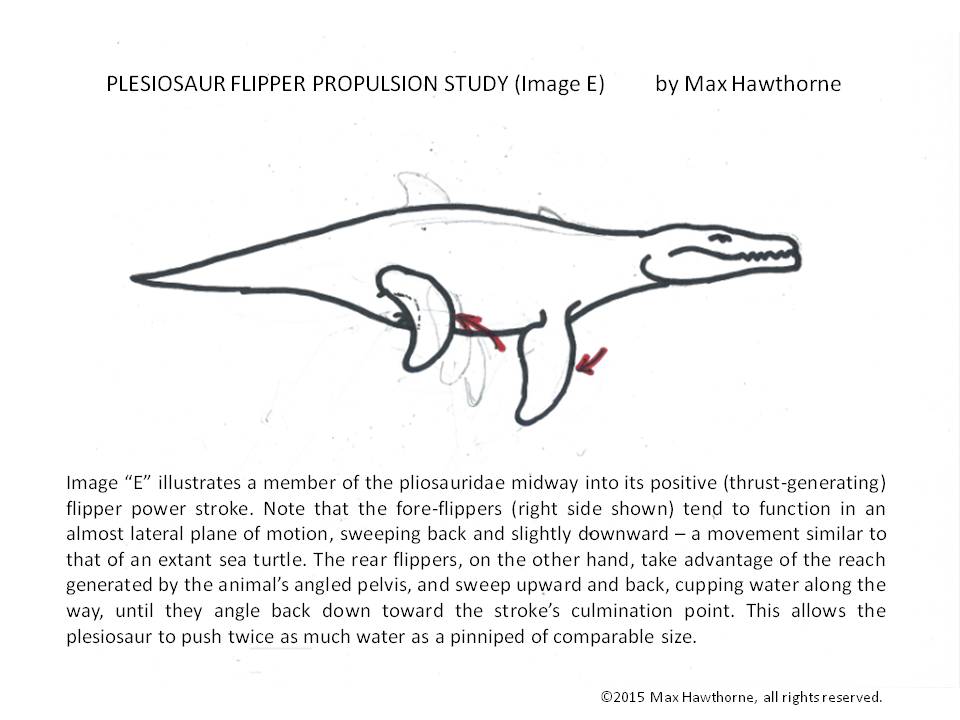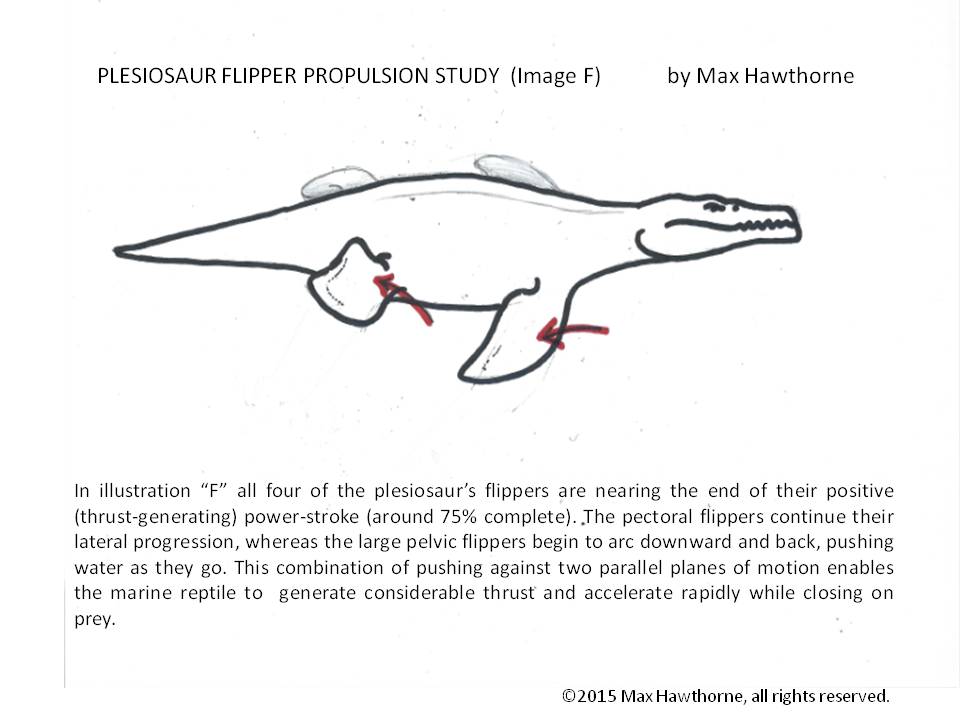Before diving right into different Plesiosaur facts. Let’s talk about viewpoints. Like everything else in this world, paleontological viewpoints and theories tend to change over time as new information and material become available. The new gives way to the old, and when we look back at what was once cutting edge” knowledge we wonder, “What were they thinking back then?” For example, there was a period when sauropods were considered to be too heavy to walk on land and spent all their time in the water, to support their massive frames.
Back then, theropods like the mighty Tyrannosaurus rex were cold-blooded, upright walkers who dragged their tails on the ground behind them like lizards. More recently, T-rex was relegated to the role of a scavenger, Pachycephalosaurus was determined to have developed its 10” thick bony skull purely as a decoration, and ceratopsians like Triceratops had forelimbs that were bowed out to the side, making their front halves move, I guess, like crocodiles.
Now, of course, we know sauropods were land-dwelling titans who, depending on species, grazed both high and low, T-rex was an active hunter as well as an opportunistic scavenger (like most modern carnivores), and Pachycephalosaurus was a walking battering ram who butted heads with his rivals like today’s Bighorn sheep. And, of course, we also know about feathers . . .
For anyone who’s ever read my novel Kronos Rising – book one in my new marine terror series – it becomes obvious that I have an affinity, nigh, a passion for plesiosaurs in general, and pliosaurs in particular. I’ve read most of the available material, avariciously studying how they dove, swam, and hunted, and, of course, I’ve used any knowledge gleaned in my novels. For the last few years, I’ve witnessed an assortment of studies and Plesiosaur facts coming to light that have been dedicated to solving the “mystery” of plesiosaur locomotion. Scientists and paleontologists seem to be baffled by a group of animals that used four sets of flippers (versus a sea lion’s meager two) to rule the seas for over 100 million years.
The problem has always seemed to have been centered around the fact that, purportedly, two sets of flippers can’t be used at the same time. If they were, like oars on a boat, they’d be pushing the same water; hence the animal can’t go any faster. Why use four fins to do a job two can do just as well? Therefore, theories have abounded on why plesiosaurs had four flippers and how they used them. Some have surmised that they worked in alternate strokes, like a figure eight, allowing the animal to conserve energy. Others have said the rear flippers alone did the work, and that the front ones steered. Still others have said the reverse – that the front flippers provided propulsion, and the rear flippers did the work.
They’re all wrong.
And I’m going to show you why.
Plesiosaur facts: How It Swims
I’ll preface this by saying that, earlier this year, I sent my theories on plesiosaur locomotion to two top experts in the field. I got very little in the way of a response, and that’s fine. I guess, being only an award-winning paleo-fiction author and not a “paleontologist” per se (no “crust”) I don’t merit much more than a cursory glance. Sometimes, however, rock hounds can figure out things that other people can’t. It’s all about using the gifts you do have. For example, at my university, I attended classes in both anatomy and kinesiology.
I also earned a BFA a degree in animation, which means, as many will realize, that I’m pretty good at making things move realistically through space. Lastly, I had a background in physical fitness, which means I focused heavily on how muscles, bones, and tendons work. Put all of that together, and it’s fairly obvious that I have a pretty good knack for figuring out why bodies work (or don’t).
My “eureka moment” about plesiosaur locomotion came in the bathtub, of all places. I was sitting there, lounging, and my mind wandered to the topic. I started using my hands like the twin flippers on one side of such an animal’s body, and BAM! It hit me, just like that. You don’t need a computer to figure out how a body moves. In fact, when the machine has no real body to work with, you can’t. And chipping away at fossils alone is not the answer. It helps, to be sure, but in the end, it’s a hands-on, common sense approach that wins the day.
And that is why I, humble author Max Hawthorne, am going to solve the plesiosaur locomotion mystery for paleontologists the world over, here and now.
The answer is in the bones, and the muscles, and in the water. It’s a simple matter of physics that, once you take the aforementioned things into account and toss out any preconceived notions, becomes blaringly obvious. (For images from original post click here)
Fact #1:
A Plesiosaur fact is that it did NOT use a set of flippers for steering only. Both pairs, front and rear, are well developed and powerful. They’re not like the fins of a humpback whale that are designed to act like rudders. They’re strong and made for strength and endurance. Nature doesn’t develop something that can run marathons and then relegate it to directing traffic. All four flippers were used for propulsion. Understand that and you’re already halfway there.
Fact #2:
All four flippers were used at the same time. The amount of thrust utilized would vary, and angles and degree of push were used to change direction, speed up and slow down, but all four were used in conjunction. Now the argument will arise: “But they’re pushing the same water, so it’s redundant and useless. Why have four flippers repeating the work only two can do?” And the answer is simple.
They are NOT pushing the same water. The front flippers move through a lower plane of motion than the rear flippers, hence they are pushing water in a different range of motion. In fact, when working in combination they’re moving twice as much water, which means the animal can move surprisingly fast – like a sea lion with a nitrous oxide boost. (see attached illustrations A-F for examples)
Fact #3:
the bones support this. If you look at the plesiosaur skeleton, you can see it staring you in the face. The pectoral flippers, where they connect to its coracoids and scapula, are angled so as to allow it to push both laterally and downward when it paddles. The pelvic flippers, on the other hand, where they connect to the pubis, ilium, and ischium, are arranged so as to be able to elevate while pushing upward, back, and then downward. Think of it as looking at a bowl from the side. The animals “chest” is curving down along one side of the bowl (front to back), with its “hips” curving up along the other side. This allows the flippers to easily work in different ranges of motions, and to affect different planes in the water without interfering with one another.
Fact#4:
During a negative (return) stroke, the flippers follow one another from their maximum rearward extension (Image G) and move back along the same plane/range of motion. This was advantageous for the animal, as it allowed the rear flippers to follow in the wake of the fore flippers, and even take advantage of the vacuum/suction the front pair created during their reverse stroke.
Fact #5:
During a positive (power) stroke, the flippers followed different paths. The front set acted basically like the flippers on a sea turtle, pushing laterally and possibly downward, depending on directional need. The rear set, however, would arc upward, cupping the water and then pushing back hard as they continued to arc back (Image B), until ending at the termination point of each thrust once more (Image G)
The series of Images C-F illustrate the movements of all four flippers during the positive stroke process.
This is how plesiosaurs, whether elasmosaur or pliosaur, swam through the seas. They were capable of moving like giant sea lions, with rapid acceleration, even from a standing still position. To change direction, they simply altered their angle of thrust, and to slow or stop, they extended their fins like a plane’s flaps, or even utilized a reverse power stroke to come to a swift stop.
I will be putting together a crude animation to further illustrate this for anyone that has any doubts. Feel free to contact me for more Plesiosaur facts and with any questions or comments.
Sincerely,
Max Hawthorne
www.kronosrising.com
(original publication date on Facebook and Goodreads, 12/21/2015)
